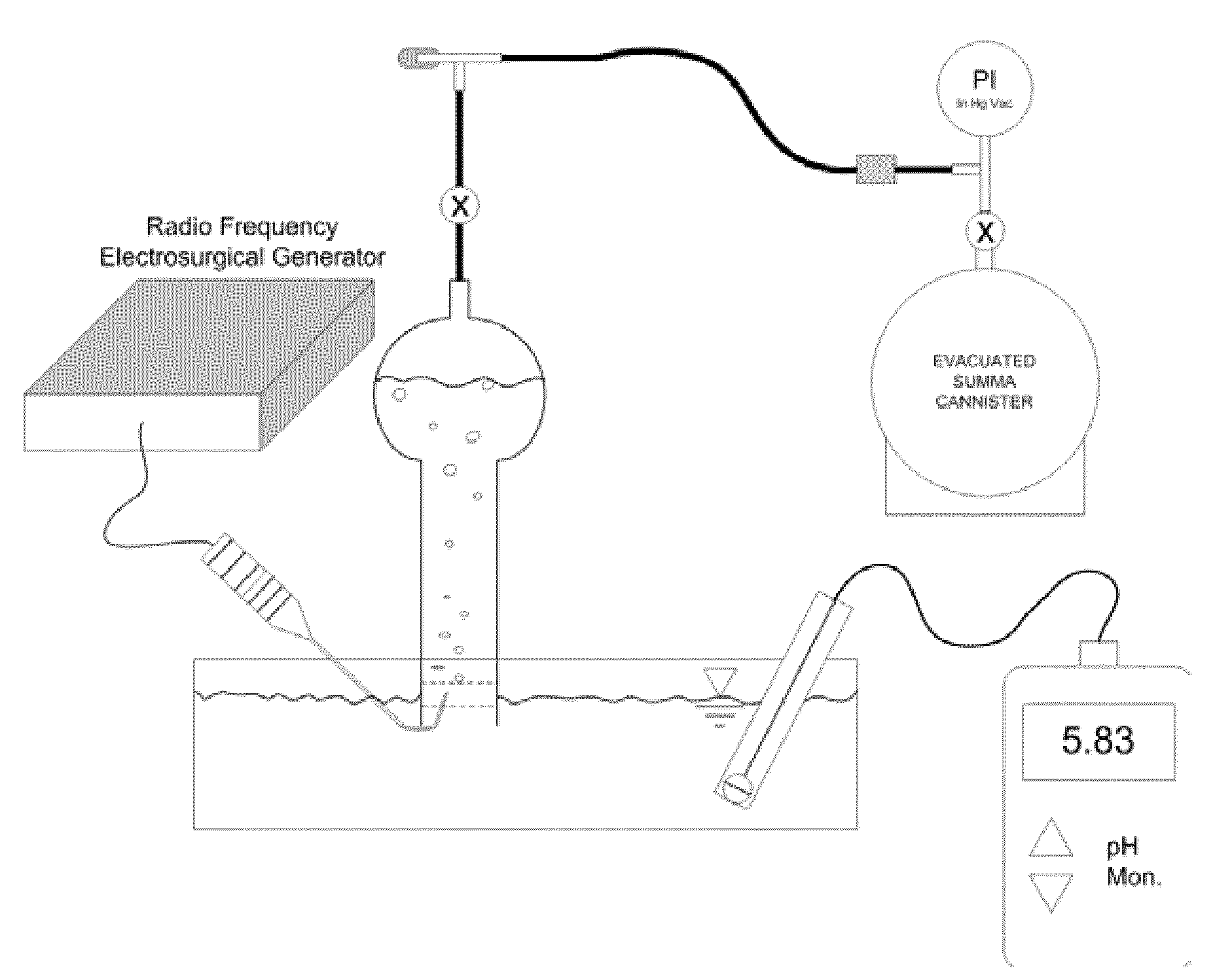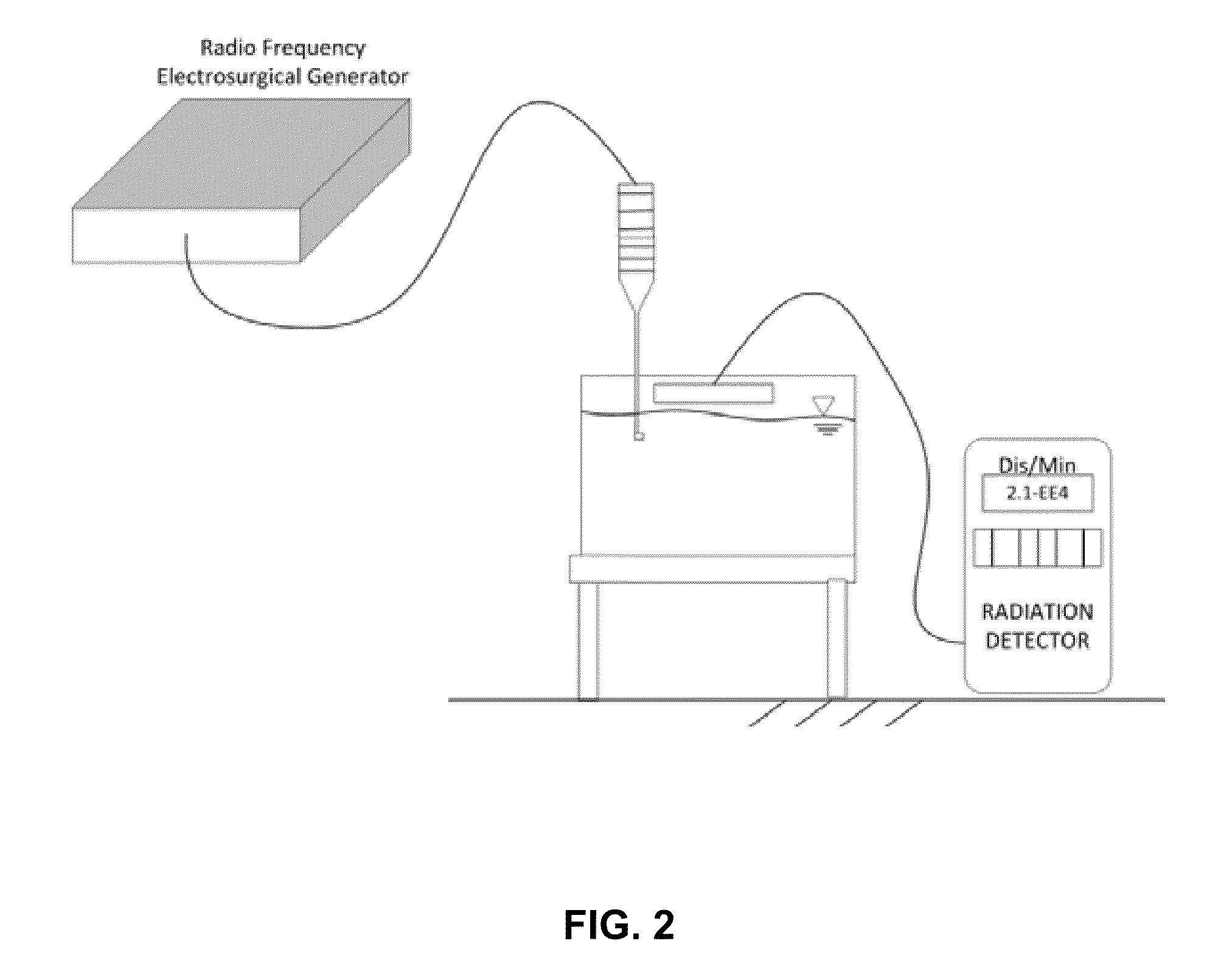Interfacing Media Manipulation with Non-Ablation Radiofrequency Energy System and Method
- Summary
- Abstract
- Description
- Claims
- Application Information
AI Technical Summary
Benefits of technology
Problems solved by technology
Method used
Image
Examples
example 1
[0178]The effects produced by surgical devices that deploy an electrical circuit between electrodes are dependent on the nature of electrical work performed upon the conductive media in and around biologic tissues. Because this conductive media is water-based, examples of the present invention characterize the effects that non-ablation radiofrequency energy exerts upon saline interfacing media typically encountered during surgical applications. Non-ablation radiofrequency surgical devices were deployed in a bulk 0.9% sodium chloride solution at 300 mOsm / L at 20° C. During energy delivery, temperature and pH changes; gaseous species production, gas condensation behavior, and gas generation dynamics; and ionized charged particle generation were measured in the region of a constrained primary reaction zone surrounding an active electrode. Saline temperature change demonstrated three functional domains commensurate with a decrease in pH at steady-state at the constrained primary reactio...
example 2
[0206]Radiofrequency energy was delivered by two methods for both 5 second and 10 second durations to ex-vivo femoral condyle osteochondral specimens obtained from patients undergoing total joint replacement; Ablation and Non-Ablation. Untreated control and treated specimens were sectioned, prepared with Live / Dead cell viability stain, and assessed by confocal fluorescence laser microscopy. The results of this example showed that the mean total Superficial Zone cell number in control sections was 1480 per mm2. The Ablation method fully corrupted the Superficial Zone by volumetric loss or near complete cellular necrosis with a mean post-treatment depth of necrosis of the remaining residual cartilage at the treatment site of 140 fÊm (range 104 fÊm-199 fÊm) at 5 seconds and 226 fÊm at 10 seconds (range 140 fÊm-334 fÊm) through the Transitional Zone tissue. The Non-Ablation method retained the Superficial Zone with a mean total number of cells of 1468 per mm2 (no statistical difference ...
PUM
 Login to View More
Login to View More Abstract
Description
Claims
Application Information
 Login to View More
Login to View More - R&D
- Intellectual Property
- Life Sciences
- Materials
- Tech Scout
- Unparalleled Data Quality
- Higher Quality Content
- 60% Fewer Hallucinations
Browse by: Latest US Patents, China's latest patents, Technical Efficacy Thesaurus, Application Domain, Technology Topic, Popular Technical Reports.
© 2025 PatSnap. All rights reserved.Legal|Privacy policy|Modern Slavery Act Transparency Statement|Sitemap|About US| Contact US: help@patsnap.com



